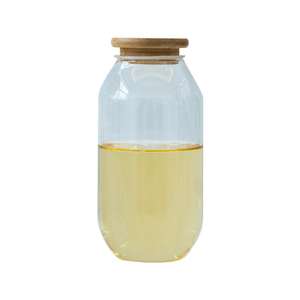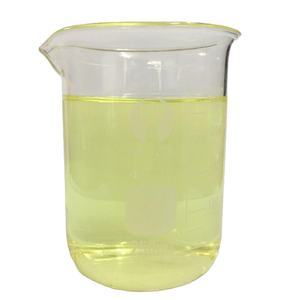Introduction to Penetrating Seal Curing Representatives: A Vital Advancement in Concrete Security
Penetrating seal treating agents (PSCAs) have actually emerged as a transformative solution in concrete modern technology, providing twin benefits of surface sealing and inner hydration enhancement. Unlike traditional membrane-forming treating compounds, PSCAs pass through deep right into the concrete matrix, responding chemically with complimentary lime and other byproducts to form insoluble crystalline frameworks. This response not just seals micro-cracks and capillary pores yet additionally boosts compressive strength and long-lasting longevity. As facilities needs grow for even more resilient and sustainable products, PSCAs are playing a progressively vital duty in extending the life span of concrete frameworks.
(Penetrating Seal Curing Agents)
Chemical Composition and Working System
Penetrating seal healing representatives are generally made up of silicates– most frequently lithium, salt, or potassium silicates– along with reactive catalysts and surfactants that boost infiltration depth and chemical sensitivity. Upon application, these agents penetrate the porous framework of fresh or solidified concrete and respond with calcium hydroxide, a result of cement hydration, to form calcium silicate hydrate (C-S-H) gel and insoluble crystalline precipitates. These developments effectively block water access, chloride ion penetration, and carbonation, which are main reasons for concrete deterioration. The self-sealing ability of PSCAs makes them particularly useful in hostile environments such as aquatic structures, wastewater treatment plants, and bridge decks.
Advantages Over Standard Curing Approaches
Typical treating approaches, including damp cloth, ponding, and membrane-forming substances, typically fall short in terms of performance, labor strength, and ecological impact. In contrast, permeating seal curing representatives provide a much more efficient, resilient, and environmentally friendly option. They do not evaporate or weaken in time, removing the demand for duplicated applications. In addition, because they chemically bond with the concrete substrate, PSCAs give irreversible defense without altering surface area looks or slide resistance. Their usage likewise contributes to energy cost savings by decreasing the demand for maintenance and repair, thus reducing the lifecycle cost of concrete structures.
Application Across Facilities and Industrial Sectors
The adaptability of permeating seal healing representatives has led to their fostering across a large range of building applications. In infrastructure projects such as highways, airports, and tunnels, PSCAs help protect versus freeze-thaw damages, deicing chemicals, and abrasion. In commercial flooring, they enhance dust-proofing and wear resistance, boosting indoor air high quality and decreasing upkeep downtime. Residential and commercial structures benefit from boosted dampness resistance in foundations, cellars, and parking lot. In addition, their compatibility with various kinds of concrete– consisting of eco-friendly concrete with high fly ash or slag material– makes them a preferred choice for lasting building and construction techniques aiming to decrease personified carbon.
Market Patterns and Technical Developments
The global market for penetrating seal curing representatives is increasing as a result of increasing need for high-performance construction materials and more stringent governing standards on building durability and sustainability. Producers are investing in R&D to establish next-generation PSCAs with boosted infiltration depth, faster response kinetics, and reduced application times. Technologies include crossbreed formulations that combine silicate-based chemistry with nano-silica or polymer-modified systems, offering superior efficiency in extreme conditions. Additionally, smart shipment systems such as fogging and low-pressure spray innovations are being adopted to ensure uniform insurance coverage and optimal material utilization. Digital devices like moisture sensors and anticipating analytics are also being integrated to check healing effectiveness in real-time.
Environmental Effect and Sustainability Considerations
Passing through seal curing representatives are usually thought about eco benign contrasted to solvent-based sealers and typical treating membrane layers. A lot of formulations are water-based, non-flammable, and emit minimal unpredictable organic substances (VOCs). However, problems continue to be regarding the sourcing of raw materials and the capacity for alkalinity-related effects during manufacturing. To attend to these issues, scientists are checking out bio-based activators, recycled silicate sources, and low-carbon synthesis routes. Furthermore, the extended life span of treated concrete reduces the regularity of demolition and restoration, lining up with round economy principles and adding to general carbon decrease in the developed environment.
Future Overview: Smart Materials and Integrated Solutions
( Penetrating Seal Curing Agents)
Looking in advance, the evolution of penetrating seal healing agents will certainly be driven by advancements in nanotechnology, clever products, and digital integration. The advancement of receptive PSCAs that can adjust to transforming ecological problems– such as humidity-triggered activation or self-healing behavior– could change concrete upkeep techniques. Assimilation with Structure Details Modeling (BIM) and Web of Points (IoT)-made it possible for tracking systems will allow for data-driven decisions on material efficiency and upkeep scheduling. As cities encounter raising climate stress and aging framework, the fostering of innovative healing technologies like PSCAs will certainly be necessary in making sure architectural durability and long life for future generations.
Provider
TRUNNANO is a supplier of boron nitride with over 12 years of experience in nano-building energy conservation and nanotechnology development. It accepts payment via Credit Card, T/T, West Union and Paypal. Trunnano will ship the goods to customers overseas through FedEx, DHL, by air, or by sea. If you want to know more about potassium silicate, please feel free to contact us and send an inquiry(sales5@nanotrun.com).
Tags: concrete addtives, Penetrating Seal Curing Agents, Lithium-Based Curing Agent Seal Concrete Agent
All articles and pictures are from the Internet. If there are any copyright issues, please contact us in time to delete.
Inquiry us

